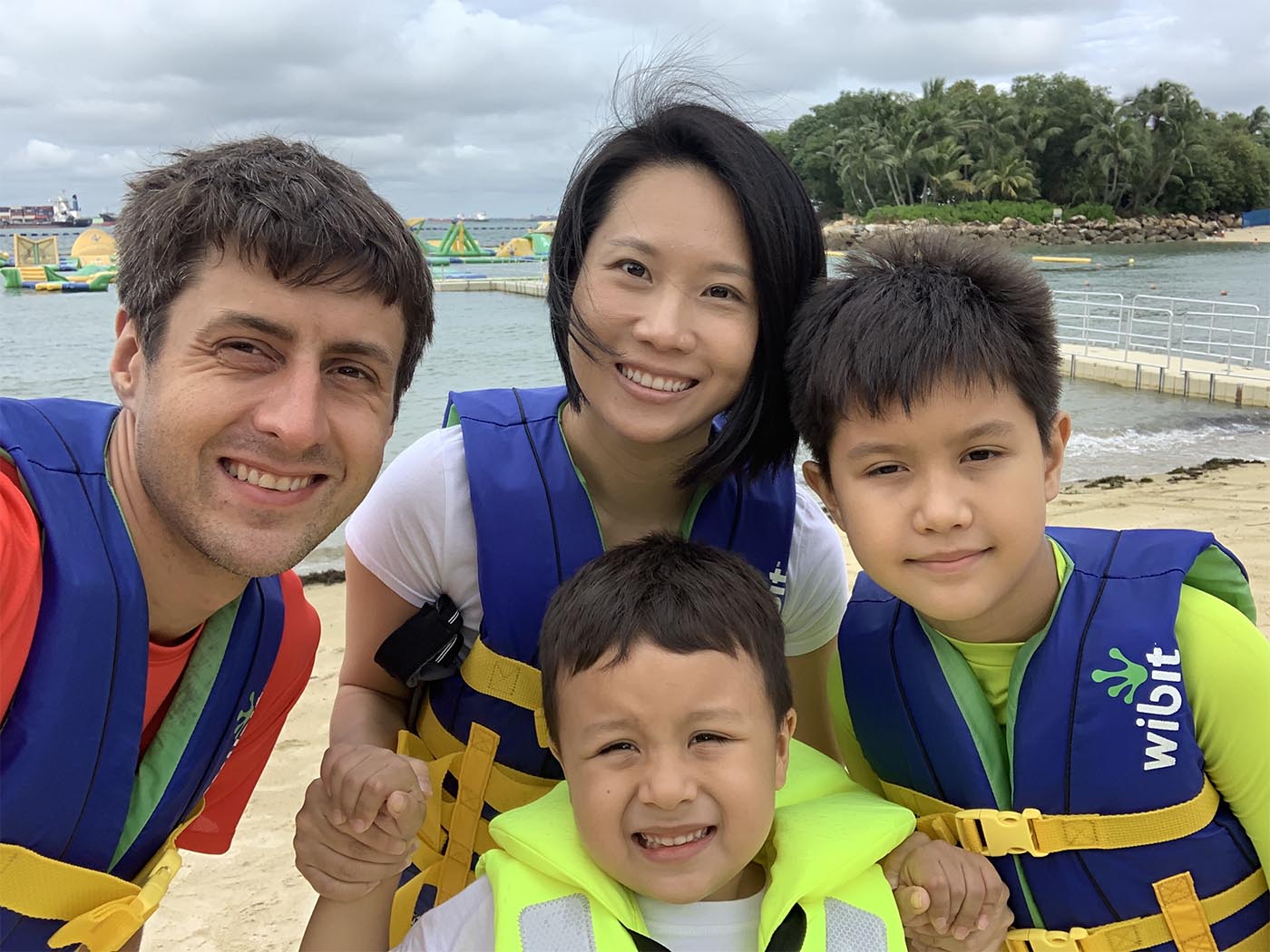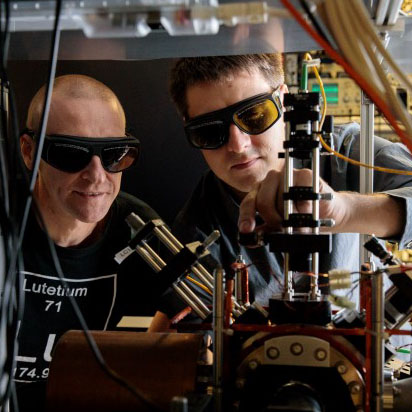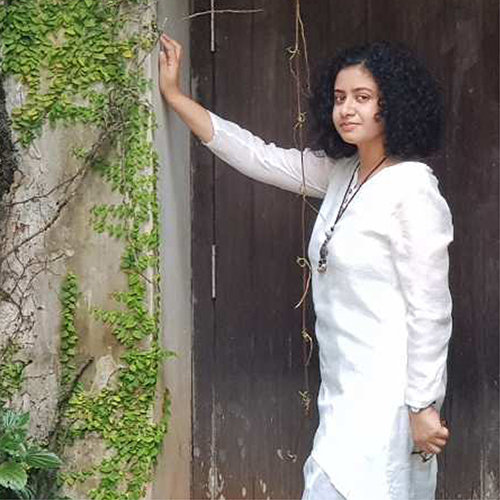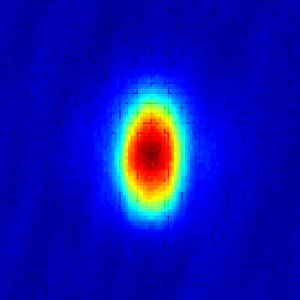Highlights
Meet a CQTian: Kyle Arnold
 Outside the lab, Kyle enjoys endurance racing and serving in the Singapore Armed Forces Volunteer Corps. Kyle is pictured here with his wife and two sons at HydroDash, an aqua park in Sentosa, Singapore.
Outside the lab, Kyle enjoys endurance racing and serving in the Singapore Armed Forces Volunteer Corps. Kyle is pictured here with his wife and two sons at HydroDash, an aqua park in Sentosa, Singapore.
Who are you?
My name is Kyle Arnold. I am originally from the United States but am a Permanent Resident of Singapore. I started at CQT as a PhD student 12 years ago when it was founded. Currently I am a Senior Research Scientist with joint appointment at Temasek Labs and CQT. I work on the lutetium optical clock project with Murray Barrett.
How did you end up at CQT?
The main reason I came to Singapore was to join my future wife Vicky Wang whom I met at the University of Illinois Urbana-Champaign. I am very fortunate that CQT was just starting up as I was applying for graduate schools with a research interest in atomic, molecular and optical physics. I was able to turn down offers from top graduate programs in the US without feeling like I was foregoing a big opportunity. Even more so in hindsight, it was a good decision given the fruitful research career I’ve had at CQT.
What are some memorable moments from your time here?
The most memorable time for me was when I first observed Bose-Einstein Condensation (BEC) in 2008, which was the first BEC made in Singapore and an early milestone for the Centre. Having built up the lab from scratch and overcome a lot of technical difficulties, it was a great feeling to finally see the distinctive peak of the BEC rising out of the thermal distribution.
Tell us more about the lutetium ion optical clock project that you are working on now.
Over the last five years, we have measured many properties of lutetium as well as developed and demonstrated essential methods to determine the potential of lutetium as an atomic clock. The results have been very promising, and we are in the midst of putting everything together in a comparison of two clocks to definitively demonstrate the accuracy. In the longer term, we aim to develop chip-based integrated ion traps for clock applications as well as multi-ion clocks.
What has been your most surprising finding?
The most surprising result from the lutetium clock so far has been the measurement of the polarisability. It is a key property in determining the atom’s potential as an atomic clock. The calculations of different theory collaborators did not even agree on the sign of polarisability so we genuinely did not know what to expect. The experiment consisted of focusing ~3 Watts of power onto the ion from a CO2 laser, the kind used for industrial metal cutting, and then measuring the frequency shift of the clock transition. When I first observed a shift of a mere 25 Hz (about 1 part in 1013 shift of optical transition frequency) I could hardly believe it. By a fluke of nature, the polarisability is very nearly zero and the smallest of any optical clock candidate under active investigation. Consequently, the clock is extremely insensitive to black body radiation and thus the temperature of its environment. This is important because precise calibration of the thermal environment is quite difficult and is a limiting factor in the accuracy of many other optical clocks.
What are the highs and lows of your work?
In precision metrology, small effects can be easily overlooked only to show up as inconsistencies in the statistical analysis after substantial data collection. There have certainly been many lows painstakingly chasing down the sources of these inconsistencies, sometimes requiring complete rebuilding of the apparatus and reacquiring of data. But we have always managed get results up to our high standards in the end. In particular I’ve made several recent measurements on singly-ionised barium, which when combined with the results of our theory collaborators, give a very accurate description of the low-lying atomic level structure. The level of agreement and consistency is quite a remarkable testament to both quantum theory and precision metrology.
What do you recommend about CQT or Singapore as a place to work and live?
Singapore has been a great place to live and raise a family, for all the often-cited reasons: it’s safe, clean, has efficient public services, good food etc. CQT also has been a great place to work: with no shortage of talented colleagues, good experimental support infrastructure like the machine shop, and plenty of other resources to conduct frontier research. I’m especially grateful to have had Murray as a supervisor. He has given me a lot of freedom to work on whatever I saw fit, like various side projects developing electronics, new optic-mechanical designs, or FPGA code. These can be things that take a lot of time and are not necessarily directed at immediate research goals but which ultimately have become essential tools in getting our lab to where it is now.
Outside the lab, you joined the Singapore Armed Forces Volunteer Corps (SAFVC). What do you enjoy about serving in the SAFVC?
I joined the SAFVC for several reasons. As I now call Singapore my home, I saw this as opportunity to opportunity to give back and have a more active role in Singapore’s civil society. Also, both of my two boys will later serve National Service, and my spouse is a Singapore Armed Forces (SAF) regular, so the SAF training could be a shared family experience. I also had a bit of nostalgia from earlier army training in the youth cadet corps back in the United States. The most enjoyable aspect is the many great friends I’ve made in service together. The most memorable thing was actually the field camp component of the basic training at Tekong: digging trenches and running the battle inoculation course with machine gun fire overhead.
You do endurance racing as well. How did you pick it up and what do you like about it?
I’d always enjoyed doing adventure sports, like skiing, trekking, and mountain climbing, but could only do them infrequently when able to travel. It’s only in the last year or so I’ve really gotten into endurance racing, like marathons and triathlons. Singapore’s great for triathlon training which can be done outdoors all year round. Although the pandemic has prevented me from participating in any triathlon competitions yet, I’ve still been able to train uninterrupted and steadily improve. Last month I completed my first full distance Ironman as part of the virtual Kona race in 10hr 43min, which I was quite proud of. Mostly I just like going fast whether running, swimming or cycling and enjoy the challenge of seeing how far I can push myself. Already I am much stronger than I would have imagined when starting out.
I have a small track running group that meets every Wednesday evening at the NUS track. Any fast runners at CQT interested to join can contact me.
Would you like to share anything about yourself that other people might be surprised to know?
I’m black belt in Tae Kwon Do and was formerly an instructor in university. Also that I can speak some Japanese having studied abroad in Japan for one year.
Learn more
Related Stories
 | Neglected atom has top properties for atomic clocks May 10 2018 |
 | Meet a CQTian: Ayesha Reezwana December 02 2020 |
 | Coolest place in the Equator May 10 2009 |






